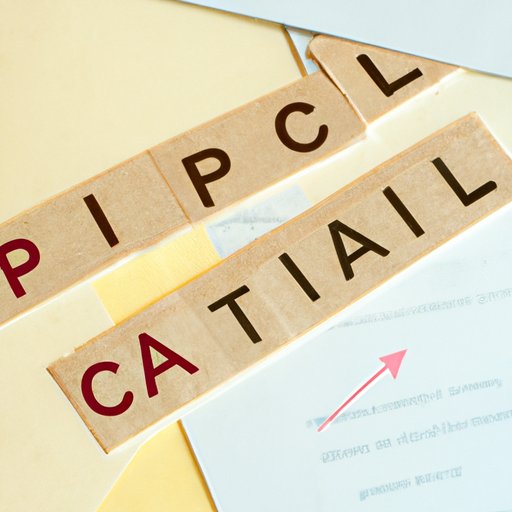Exploring Physical Capital: The Backbone of Economic Growth
When we think about economic growth and development, we often hear about concepts such as infrastructure, labor force, and financial investments. However, one crucial aspect that often goes overlooked is physical capital. Physical capital is the tangible assets that a business or country uses to produce goods or services, such as machinery, equipment, and buildings. In this article, we will delve deep into what physical capital is, its importance and relevance, its relationship with other forms of capital, and how it has transformed industries and economies over time.
What is Physical Capital?
Physical capital refers to the machinery, buildings, tools, and equipment that businesses and countries use to produce goods or services. It can also include infrastructure like roads, airports, and bridges that facilitate transportation, communication, and trade.
Physical capital is a crucial factor in economic growth, as it increases productivity and output, leading to higher profits, wages, and living standards.
Benefits of Physical Capital
Physical capital has numerous benefits for businesses and countries. One of the most significant benefits is increased efficiency and productivity. Machines and tools make work more accessible and faster, leading to more output for the same amount of input.
Physical capital can also reduce costs by automating or streamlining processes, leading to more effective production and reduced waste.
In addition, physical capital provides long-term economic returns by facilitating trade and investment. Countries and businesses with better infrastructure and equipment will attract more investors and consumers, leading to higher economic growth and development.
Sectors That Use Physical Capital
Physical capital is used in various sectors such as manufacturing, agriculture, construction, and services. In manufacturing, physical capital includes machines and equipment that help produce goods such as automobiles, furniture, and electronics. In agriculture, physical capital can include tractors, irrigation systems, and fertilizer to produce food and crops. In construction, buildings, and heavy machinery such as bulldozers and cranes are essential physical capital assets. Lastly, in the services sector, computers, software, and buildings are needed to provide services such as banking, healthcare, and education.
Comparison with Other Forms of Capital
Physical capital is just one form of capital that exists. Other forms of capital include social capital, which includes relationships and networks that allow people to access resources and opportunities, and human capital, which refers to education, skills, and training that people possess.
While physical capital is essential, it does not work in isolation. It often relies on social and human capital to achieve its goals. For example, physical capital like machines and equipment needs skilled operators to use them, which requires human capital. Physical capital also requires cooperation and collaboration, which depends on social capital.
Historical Evolution of Physical Capital
Physical capital has evolved over time, along with the technological advancements that have driven its development. In the 18th and 19th centuries, the industrial revolution brought about significant changes in physical capital, leading to the development of new machines and tools such as steam engines and the spinning Jenny. These machines transformed the textile industry, leading to increased output and efficiency.
In the 20th century, physical capital continued to evolve, with the introduction of assembly line techniques and electric motors, leading to increased automation and mass production. Fast forward to today, physical capital is continually evolving, with the advent of new technologies like 3D printing, robotics, and automation. These technologies are increasingly being used to produce goods and services, leading to further increases in productivity and lower costs.
Case Study Approach
A company that has become successful despite facing physical capital challenges is Tesla Inc. When Tesla started, electric cars were relatively new, and existing automobile manufacturers were hesitant to invest in them. Tesla saw this as an opportunity and invested heavily in research and development to create electric cars that could compete with gas-powered vehicles.
Tesla was also able to leverage its physical capital effectively, investing in advanced battery technologies and creating flexible and modular factories. These factories could easily adapt to changing production needs, leading to increased efficiency and productivity. Tesla’s success has shown that good physical capital investment, combined with innovation, can lead to significant economic growth and development.
Future Outlook
Looking to the future, it is clear that physical capital will continue to play a significant role in the economy. However, there will be some changes in how physical capital is invested.
For example, new technologies like artificial intelligence, the Internet of Things, and big data will play a more prominent role in optimizing the use of physical capital. There will also be further investment in renewable energy and sustainable infrastructure. Additionally, the rise of the gig economy will lead to the need for more flexible and adaptable physical capital, such as shared workspaces and flexible production facilities.
Conclusion
In conclusion, physical capital is a vital aspect of economic growth and development. It provides businesses and countries with the tools and equipment necessary to produce goods and services, leading to higher productivity, efficiency, and profitability. As technology continues to evolve, the way physical capital is invested will change, requiring innovative approaches to investment and asset management.
By understanding the value of physical capital, businesses and countries can explore new opportunities for growth and development. It is not just about the physical assets, but also the innovation in which we use them.
